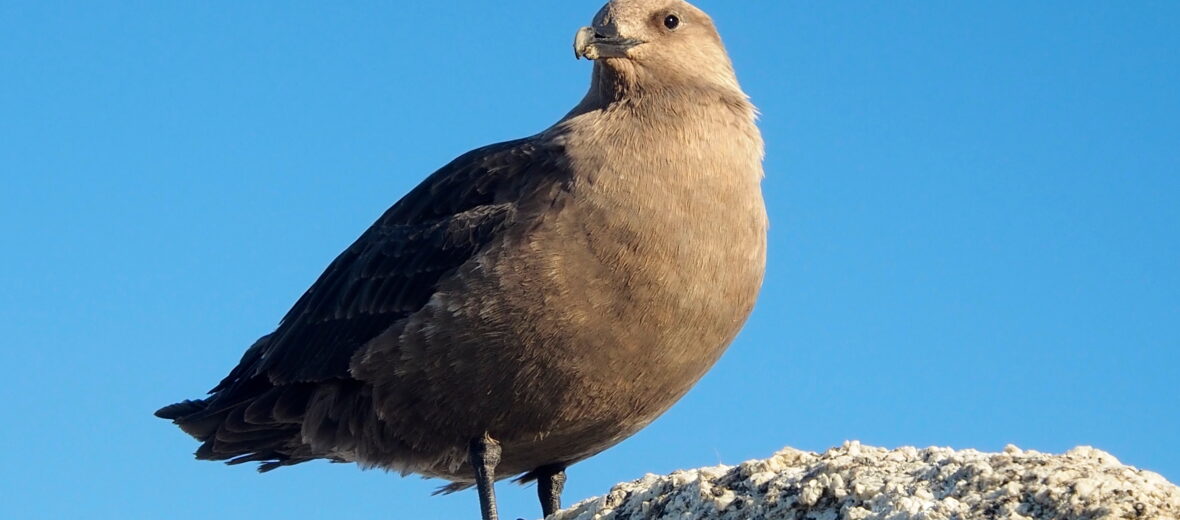
The south polar skua, aka jaeger, is a seabird that can be found in Africa, Antarctica, Asia, North America, Oceania, and South America. They use the snow-free areas of Antarctic coasts to breed during warmer months, and spend the cooler months at sea, in the Atlantic, Indian, and Pacific Oceans. With an estimated 15,000 individuals, these birds are listed as Least Concern by the IUCN.
First the Stats…
Scientific name: Stercorarius maccormicki
Weight: Up to 3 lbs.
Length: Up to 21 inches
Wingspan: Up to 65 inches
Lifespan: Up to 24 years
Now on to the Facts!
1.) Skuas feed on fish, krill, carrion (dead animals), and will also eat young birds and even rabbits.
2.) They are able to hunt, but prefer to bully other birds into giving up their meal.
3.) The south polar skua is known for diligently defending their nests via dive-bombing the head of any perceived threat.
4.) A group or flock of skuas is called a shishkab.
5.) They are aggressive to other birds, but social amongst their own kind.
But wait, there’s more on the south polar skua!
6.) Skuas are related to waders, auks, gulls, and skimmers.
7.) Females lay up to 2 eggs each breeding season that incubate for up to 32 days.
Did you know…?
South polar skuas, as mentioned, are very aggressive and won’t think twice about violently shaking another bird until they disgorge their meal.
8.) Typically only 1 chick survives to adulthood.
9.) During the summer months, these birds take up residence near groups of Adelie penguin rookeries and steal eggs, kill chicks, and feast on dead birds.
10.) They migrate great distances and have even been seen at the South Pole.
Now a Short South Polar Skua Video!
Also, check out the Critter Science YouTube channel. Videos added frequently!
Want to suggest a critter for me to write about? Let me know here.



